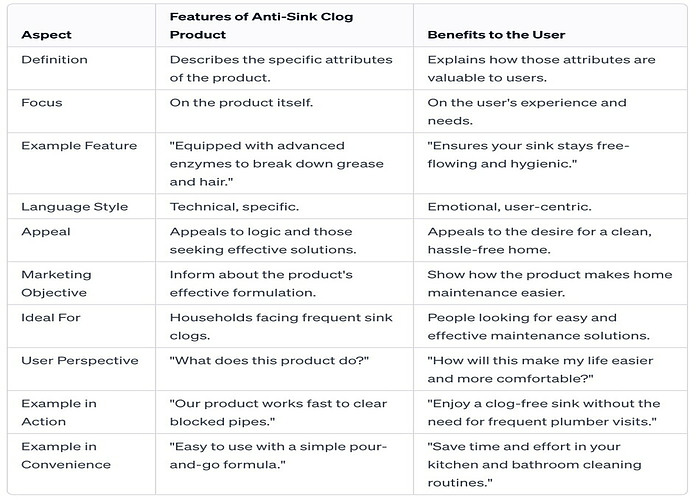
I’m going to lay down a foundational strategy for promoting affiliate products which hinges on understanding your audience. It’s about putting yourself into their world, identifying not just your target demographic, but also the specific issues they face. This is is also what I commonly refer to as understanding your audiences “hot buttons”.
That’s not all, though. I want to help guide you on crafting the kind of content that not only addresses those issues but also presents actionable solutions.
If your website visitors are wrestling with a particular problem, you can always adjust your approach down the road to ensure your advice hits home, but ideally you want to nail this down at the outset. The question is “how do we know what the our audience wants at the outset?”
When it comes to crafting this content, keyword research is your best friend and this is the starting point of audience comprehension. Especially when the keywords reflect a ‘help’ intent. You want to leverage those types keywords to create articles that organically lead to your affiliate products. And guess what? You’re not just “pushing” products like a used car salesman; you’re first and foremost helping people.
If you can HELP people, you establish trust and at that point you can promote products and services to them.
As we segue into the next section…you’ll see how these foundational aspects of understanding and providing value to your audience will naturally lend themselves to creating content that people not only want to read but are also more likely to convert from.
Crafting Engaging and Relevant Content.
Once you’ve honed in on who your readers are and what they’re searching for, the next step is to create content that they can’t resist. This isn’t just about touting the FEATURES of a product; it’s about weaving the benefits of these products into articles and reviews that readers find useful and engaging.
But remember, we are first HELPING folks. The same way as I am helping you here, you want to do this with your audience. This comes down to answering the “intent’ of what your audience is after in their search.
If someone is looking to “fix a clogged bathroom sink”, you could offer them information on how to do this, with instructions on how to remove the p-trap, and clean out the clogs. But then you could recommend a product that will prevent sinks from getting clogged in the future, doing so in a way where you emphasize the BENEFITS to that user.
Here is an example comparison, between the stark difference between marketing “features” versus “benefits”.
 Also, if possible you will want to integrate personal stories and experiences where you’ve used the product can take credibility up a notch.
Also, if possible you will want to integrate personal stories and experiences where you’ve used the product can take credibility up a notch.
Authenticity will truly shine through when you can speak from experience, and your audience is more likely to trust your recommendations if they feel real and relatable. This is also something that will be highly beneficial in terms of Google rankings these days, with their Google E-E-A-T algorithm (E is for Experience, A is for Authenticity).
And of course, don’t underestimate the power of imagery, videos, and infographics. These elements can break up text (like my image above, and my header image), and can illustrate points more clearly, and in many cases, keep readers on the page longer. Just like a children’s picture book, SHOW don’t just TELL.
Optimizing Your Website for Trust and Conversions.
When it comes to selling affiliate products on your website, trust is your currency, and optimization is your strategy for accumulation. It’s not just about listing products; it’s about crafting a user experience that is so smooth, intuitive, and reassuring that visitors are more than willing to take your recommendations.
Start with the design of your website.
Choose an overall theme that is simple. Bells and whistles don’t lead to conversions, quality and helpful content does. That is a big mistake many make. A simple white page with great content is much better than fluffy content, with flashing lights all over it..
A clean, organized layout suggests professionalism and reliability. Integrate visually appealing graphics, but keep them relevant and avoid clutter. Also, ensure that your website’s color scheme and typography are easy on the eyes, which can significantly impact how long visitors stick around.
And, don’t overlook the technical side of things. ..
A fast-loading website is a must. Speed matters because if your website takes an eternity to load, you can bet that’s how long it will take for your visitors to vanish. Make sure your website is optimized for mobile devices, and you are using a high quality Managed Hosting platform. This is worth it’s weight in gold (note: Wealthy Affiliate is my top recommended website and hosting platform for a reason and this very website is hosted using this service).
With more people browsing on-the-go, mobile responsiveness isn’t just a nice-to-have, it’s essential.
Now, let’s talk about the conversion sweet spot: your calls-to-action (CTAs).
They should be prominent without being pushy. Good placements include at the end of a helpful article or alongside a product review. And remember, your CTAs must align with the content they’re part of—promise your readers something valuable if they click, and then deliver on that promise.
===> Learn How to Sell Affiliate Products, With Amazing Effectiveness Here!
See what I did there?
I just dropped a relevant CTA, and to a high quality product. If you take action on that, and you join Wealthy Affiliate (a place where I will directly be able to help you scale a successful affiliate marketing business), then I could earn revenue.
That is the basis of all affiliate success. Help, Establish Trust, Recommend Based on Relevance, and Convert (Hopefully).
And because transparency is something we are discussing, it’s vital to disclose your affiliate relationships clearly…like I just did. It’s not only a good practice from an ethical standpoint, but it also builds trust with your audience.
People tend to appreciate honesty and are more inclined to support you if they don’t feel like they’re being misled. You will actually convert higher from all of my testing if you are disclosing affiliate links, and it is proper practice based on FTC regulations as well.
Maintaining Relationships and Trust Through After-Sales Support.
Now that we’ve discussed how to attract and convert visitors into customers, I’m going to help you understand why the journey doesn’t stop there. Once a sale is complete, the real work begins in maintaining that relationship and building trust that lasts. Because, at the end of the day, repeat customers can be the backbone of a successful affiliate marketing strategy.
If you have the capability to and you have been “building a list” through email marketing campaigns, you will want to follow-up with quality content, and keep your audience engaged.
Whether it’s through email newsletters, social media updates, or new blog posts, keep providing value. Continue helping your audience use the products they’ve purchased through guides, tips, and troubleshooting advice.
And guess what? Encouraging your audience to share their experiences can serve as a gold-mind for credibility and establishing a base of user-generated content, like reviews and testimonials. These not only create a sense of community but also provides social proof, tipping the scales for future buyers.
Including success stories and testimonials directly on your site can do wonders for trust. When potential customers see others benefiting from the affiliate products you promote, it solidifies your reputation as a reliable source of information and solutions.
Lastly, remember that your content should evolve as your audience’s needs do. Striking the perfect balance between promoting new products and supporting existing customers will keep your affiliate website evolving with frequency and engaging. This is not about making a one-time sale. It’s about creating a resource where people continually come back for more insight, more products, and more solutions.
So get out there, and get your effective affiliate marketing strategy in place. And if you ever want to join me and get mentorship within the top affiliate marketing community and platform in the world, I encourage you to get your FREE Business Hub rolling within Wealthy Affiliate. It will truly change the way you view building an online business.


Hey thank you for this post!
I enjoyed reading your post, it was packed with information!
I was looking for a guide something quite similar to this, in the hopes that it can help boost my affiliate business. Going to take note of what you have mentioned and try to implement it into my affiliate work and hopefully it’ll make a positive difference!
Thanks again and have a great day!
Sounds good Sariya, really glad you enjoyed this post. If you understand how to tie in affiliate promotions into your content, you are going to succeed at a much higher rate.
Remember, the”intent” is where a great deal of the focus should lie, what is the person searching for, what do they need help with, and what are their “hot buttons”. And once you define that and tie in a product/service to help them, focus on the benefits (the outcome they are looking to achieve) not the features of the particular product. That is what I outlined there within my content.
Great post, Kyle! Your breakdown of effective affiliate marketing strategies is spot-on. Understanding our audience’s needs and providing genuine help before promoting products is key. I particularly liked your emphasis on crafting engaging content that focuses on benefits rather than just features.
One question I have is about after-sales support. You mentioned maintaining relationships with customers post-sale. How do you suggest balancing this ongoing support with continuing to attract new customers and promote new products? Looking forward to your insights!
Yeah, your audience needs are imperative to having a successful flow from your content, into an effective affiliate promotion. Too many people get too ‘salesy’ with their content, and that will detract from the value they are offering.
Help people first, establish trust, and then you can make relevant product/service recommendations.
As for the after sales support, that is going to depend on your overall business and how you are connecting with your audience. If you are promoting through email marketing, you would want to follow up and continue offering value. It is much easier to sell to an existing customer, than it is to create a new (to the tune of 7x), so continue engaging with your audience through the platforms where they follow you, whether that is email or social media.
Hope this helps!